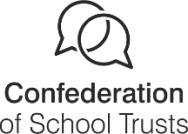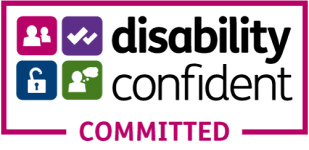National Curriculum Programme of Study
Intent
At St. Norbert’s, we strive to create a culture which aims to inspire an active generation to enjoy PE, encourage each other and achieve. We provide a safe and supportive environment for children to flourish in a range of different physical activities which is essential in supporting their physical, emotional, spiritual, social and moral development.
At St. Norbert’s we offer a dynamic, varied and stimulating program of activity to ensure that all children progress physically through an inspirational, unique and fully inclusive PE curriculum. We encourage all children to develop their understanding of the way in which they can use their body, equipment and apparatus safely yet imaginatively to achieve their personal goals. All children have the opportunity to enjoy being physically active, maintain a healthy lifestyle and using the medium of sport, increase their self-esteem. We aspire for children to adopt a positive mind-set and believe that anything can be achieved with determination and resilience.
The aim of Physical Education is to promote physical activity and healthy lifestyles. Children are taught to observe and produce the conventions of fair play, honest competition and good sporting behaviour as individual participants, team members and spectators. Thus embedding life-long values such as co-operation, collaboration and equity of play.
We provide opportunities for children to learn how to stay safe by starting swimming lessons in Year 1, Year 2 and continuing in Year 3 until children have become confident in the water, knowing how to keep safe and also meet the National Curriculum requirements of swimming 25m by the end of Year 6 through further Water Safety and Booster sessions.
Implementation
At St. Norbert’s, our PE curriculum is varied and long-term plans ensure that we meet the requirements of the National Curriculum. All pupils receive at least two hours of high-quality PE using the vast outside space or school hall. All children have a weekly PE lesson with their class teacher and a termly rotation of Dance Lessons with a qualified Dance Teacher.
Our PE curriculum is sequenced precisely to ensure progression of knowledge and skills throughout a child’s primary education, thus enabling children to build upon prior experiences and apply these fluently, with confidence. Children also have the opportunity to further these skills at after school sports clubs, thus making club links within the community and development officers for specific sports. At St. Norbert’s, we endeavour to provide a broad range of activities based on children’s interests and new initiatives.
In partnership with Beyond the Physical and their delivery partner, Discovery Sports Coaching, the school uses an inspirational and fully inclusive PE scheme of work. This ensures high-quality continuous CPD for all teaching staff, fostering a consistent and effective approach to PE delivery across all year groups.
Inter and intra sports competitions are a particular strength of the school and we would warmly welcome you to admire our collection of trophies. Although we enjoy the competitive nature of sport, we also appreciate and encourage the importance of children ‘having a go’ and promote positive experiences of being physically active and not always participating to win. We have an inclusive approach and value the importance of physical and mental well-being.
Children take part in a range of invasion, striking & fielding or net & wall games, we promote imagination and creativity in gymnastics and dance as well as provide opportunities for athletics using both indoor and outdoor environments plus outdoor and adventurous activities. Pupils are encouraged to take part in after school clubs and have the opportunity to compete against other schools. In KS2, children go on a residential course for outdoor activities in Year 4. Children have swimming lessons in Year 1, Year 2 and Year 3. A further series of ‘Booster’ sessions are delivered to Year 5 and Year 6 in order to achieve their water confidence.
Physical Education is fundamental in developing healthy lifestyles in young people and at St. Norbert’s we provide a wide array of opportunities to develop this and sporting skills outside of the normal curriculum time. Regular extra-curricular clubs are very popular and offer a wide variety of sports, including: Gymnastics (KS1), Girls and Boys Football, Netball, Dance, Cricket, Rounders, Bench Ball, Dodge Ball and Athletics.
Playtimes are an important part of our pupils being happy, healthy and ready to learn. We have well-staffed and equipped playground, a sports field, an adventure trim-trail, skipping ropes and an Outdoor Area. Also within our vibrant EYFS area we have new balance bikes; trundle wheeled toys; apparatus for balancing and games bags which are all designed to provide opportunities for children to develop and improve fundamental skills using various body parts.
To develop leadership and communication skills, children in Years 5 and 6 can apply to become a Young Sports Leader which is a responsible role in encouraging younger children to learn how to play collaborative games, respecting rules and to be as active as possible during playtimes. Children selected are positive role-models for younger members of the school, organising lunchtime games and assisting with annual sports days.
At St. Norbert’s we recognise the importance of being physically active throughout the school day so to reduce sedentary learning, the whole school embraced the ‘Daily Mile’ which is thoroughly enjoyed by both pupils and staff; children are fully engaged and enthused. Throughout the day classes have the option to walk the Daily Mile alongside ‘GoNoodle’ class-based activity breaks. Teachers often log onto ‘GoNoodle’ throughout the day, linking the active breaks to aspects of their learning.
Impact
To fulfil our vision by inspiring a generation, at St Norbert’s we motivate children to participate in a variety of sports which are engaging and fun. We inspire children to instinctively utilise skills and knowledge acquired during PE lessons, encouraging them to take responsibility for their own health and fitness thus developing a love of sport leading to a happy and healthy life.





